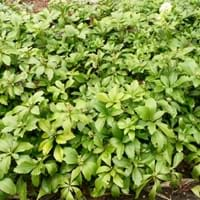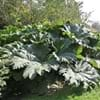Life Span
Perennial
Perennial
Type
Perennial
Broadleaf Evergreen
Origin
Hybrid origin
China, Japan
Types
Victoria Rhubarb
Colorado Red Rhubarb
Turkish Rhubarb
Not available
Number of Varieties
Not Available
Habitat
gardens, Grassland, Humid climates, Tropical regions, Urban areas
Banks, Slopes, Temperate Regions
USDA Hardiness Zone
5-8
4-8
AHS Heat Zone
8-3
Not Available
Sunset Zone
2b, 3a, 3b, 4, 5, 6, 7, 14, 15, 16, 17
21,22
Habit
Clump-Forming
Prostrate/Trailing
Minimum Height
Not Available
Flower Color
Light Pink
White
Flower Color Modifier
Not Available
Bicolor
Fruit Color
Burgundy
Not Available
Leaf Color in Spring
Green, Dark Red
Dark Green
Leaf Color in Summer
Green, Dark Red
Dark Green
Leaf Color in Fall
Green, Dark Red
Dark Green
Leaf Color in Winter
Light Green
Dark Green
Leaf Shape
Compound
Lanceolate
Plant Season
Spring, Summer, Fall
Spring, Summer, Fall, Winter
Sunlight
Full Sun, Partial Sun
Partial shade, Full Shade
Growth Rate
Medium
Medium
Type of Soil
Clay, Loam
Loam
The pH of Soil
Acidic, Neutral, Alkaline
Acidic, Neutral
Soil Drainage
Average
Well drained
Bloom Time
Summer, Late Summer
Late Spring, Early Summer
Tolerances
Drought
Drought, Variety of soil types
Where to Plant?
Ground
Ground
How to Plant?
Stem Planting
Divison, Seedlings, Softwood cuttings, Stem Cutting
Plant Maintenance
Medium
Low
Watering Requirements
Do Not over Water, Requires regular watering, Use Mulches to help prevent water loss during hot and windy weather, Water Deeply
Requires watering in the growing season
In Summer
Lots of watering
Lots of watering
In Spring
Moderate
Moderate
In Winter
Average Water
Average Water
Soil pH
Acidic, Neutral, Alkaline
Acidic, Neutral
Soil Type
Clay, Loam
Loam
Soil Drainage Capacity
Average
Well drained
Sun Exposure
Full Sun, Partial Sun
Partial shade, Full Shade
Pruning
Remove damaged leaves, Remove dead branches, Remove dead leaves
Remove damaged leaves, Remove dead branches, Remove dead leaves
Fertilizers
All-Purpose Liquid Fertilizer
All-Purpose Liquid Fertilizer
Pests and Diseases
Red blotch
Alternaria leaf blight, Canker, Root knot nematode
Plant Tolerance
Drought
Drought, Variety of soil types
Flowers
Showy
Insignificant
Flower Petal Number
Not Available
Single
Foliage Texture
Coarse
Medium
Foliage Sheen
Glossy
Glossy
Attracts
Not Available
Bees
Allergy
Skin irritation
Not Available
Aesthetic Uses
Showy Purposes
Cottage Garden, Ground Cover, Landscape Designing, Showy Purposes
Beauty Benefits
Not Available
Not Available
Environmental Uses
Air purification
Air purification
Medicinal Uses
Not Available
Not Available
Part of Plant Used
Whole plant
Fruits
Other Uses
Culinary use, Used as Ornamental plant
Container, Culinary use, Florist trade and landscaping, Grown for shade
Used As Indoor Plant
No
No
Used As Outdoor Plant
Yes
Yes
Garden Design
Feature Plant, Mixed Border
Groundcover
Botanical Name
RHEUM 'Ace of Hearts'
Pachysandra terminalis
Common Name
Ace of Hearts Ornamental Rhubarb, Ornamental Rhubarb
Pachysandra, Japanese pachysandra, carpet box, Japanese spurge
In Hindi
सजावटी प्रकार का फल
जापानी रसदार पौधा
In German
Ornamental Rhabarber
japanische Spurge
In French
rhubarbe ornementale
Euphorbe japonaise
In Spanish
Ornamental de ruibarbo
Euphorbia japonesa
In Greek
καλλωπιστικά Ραβέντι
Ιαπωνικά Ευφόρβιο
In Portuguese
ornamental ruibarbo
Spurge japonês
In Polish
ozdobne Rabarbar
japoński Wilczomlecz
In Latin
decentius Rhubarb
Spurge Italica
Phylum
Tracheophyta
Magnoliophyta
Class
Not Available
Magnoliopsida
Order
Caryophyllales
Euphorbiales
Family
Polygonaceae
Buxaceae
Clade
Angiosperms, Core eudicots, Eudicots
Angiosperms, Eudicots
Tribe
Not Available
Not Available
Subfamily
Not Available
Not Available
Season and Care of Ornamental Rhubarb and Japanese Spurge
Season and care of Ornamental Rhubarb and Japanese Spurge is important to know. While considering everything about Ornamental Rhubarb and Japanese Spurge Care, growing season is an essential factor. Ornamental Rhubarb season is Spring, Summer and Fall and Japanese Spurge season is Spring, Summer and Fall. The type of soil for Ornamental Rhubarb is Clay, Loam and for Japanese Spurge is Loam while the PH of soil for Ornamental Rhubarb is Acidic, Neutral, Alkaline and for Japanese Spurge is Acidic, Neutral.
Ornamental Rhubarb and Japanese Spurge Physical Information
Ornamental Rhubarb and Japanese Spurge physical information is very important for comparison. Ornamental Rhubarb height is 71.10 cm and width 81.30 cm whereas Japanese Spurge height is Not Available and width 180.00 cm. The color specification of Ornamental Rhubarb and Japanese Spurge are as follows:
Ornamental Rhubarb flower color: Light Pink
Ornamental Rhubarb leaf color: Green and Dark Red
Japanese Spurge flower color: White
- Japanese Spurge leaf color: Dark Green
Care of Ornamental Rhubarb and Japanese Spurge
Care of Ornamental Rhubarb and Japanese Spurge include pruning, fertilizers, watering etc. Ornamental Rhubarb pruning is done Remove damaged leaves, Remove dead branches and Remove dead leaves and Japanese Spurge pruning is done Remove damaged leaves, Remove dead branches and Remove dead leaves. In summer Ornamental Rhubarb needs Lots of watering and in winter, it needs Average Water. Whereas, in summer Japanese Spurge needs Lots of watering and in winter, it needs Average Water.





